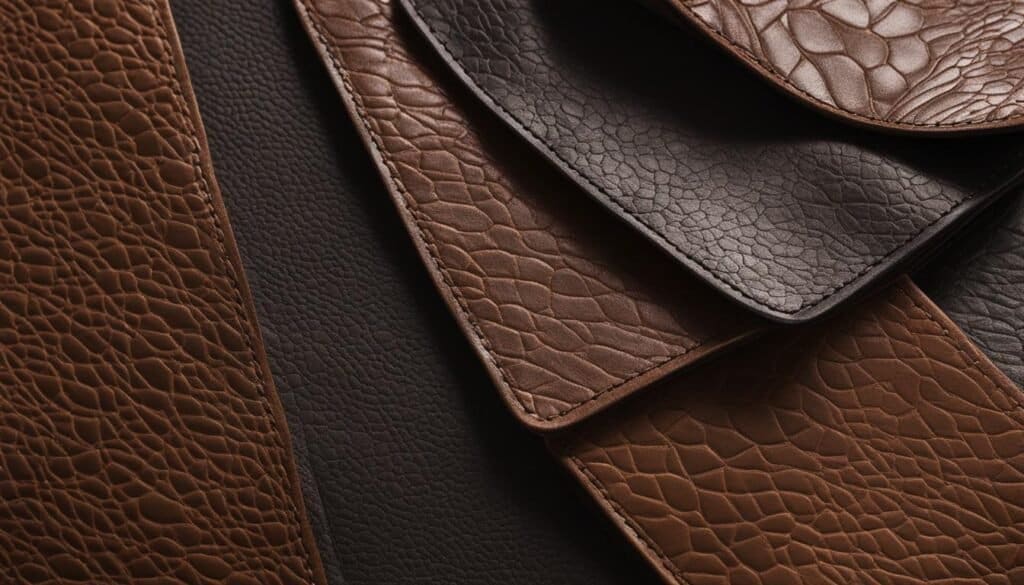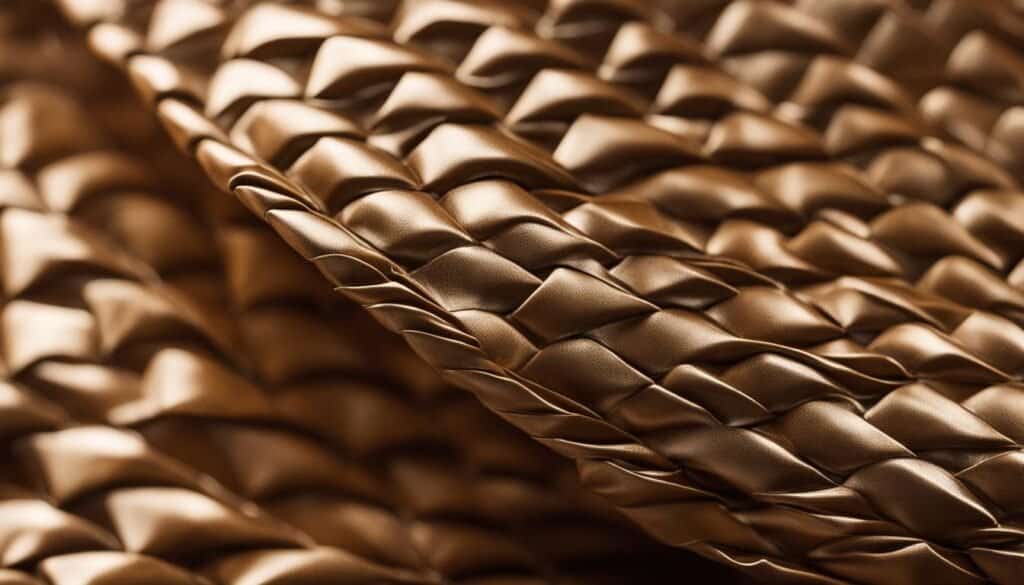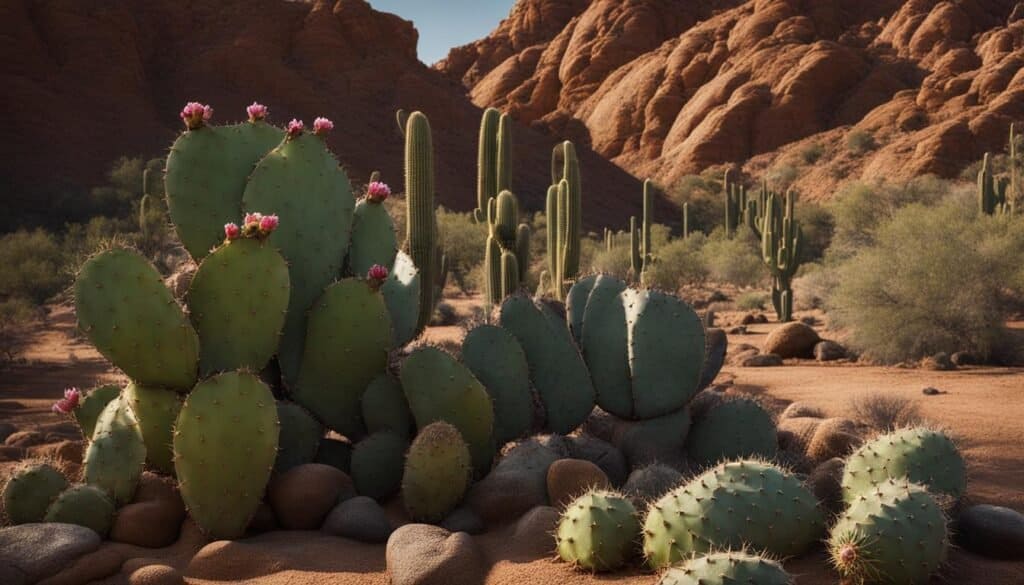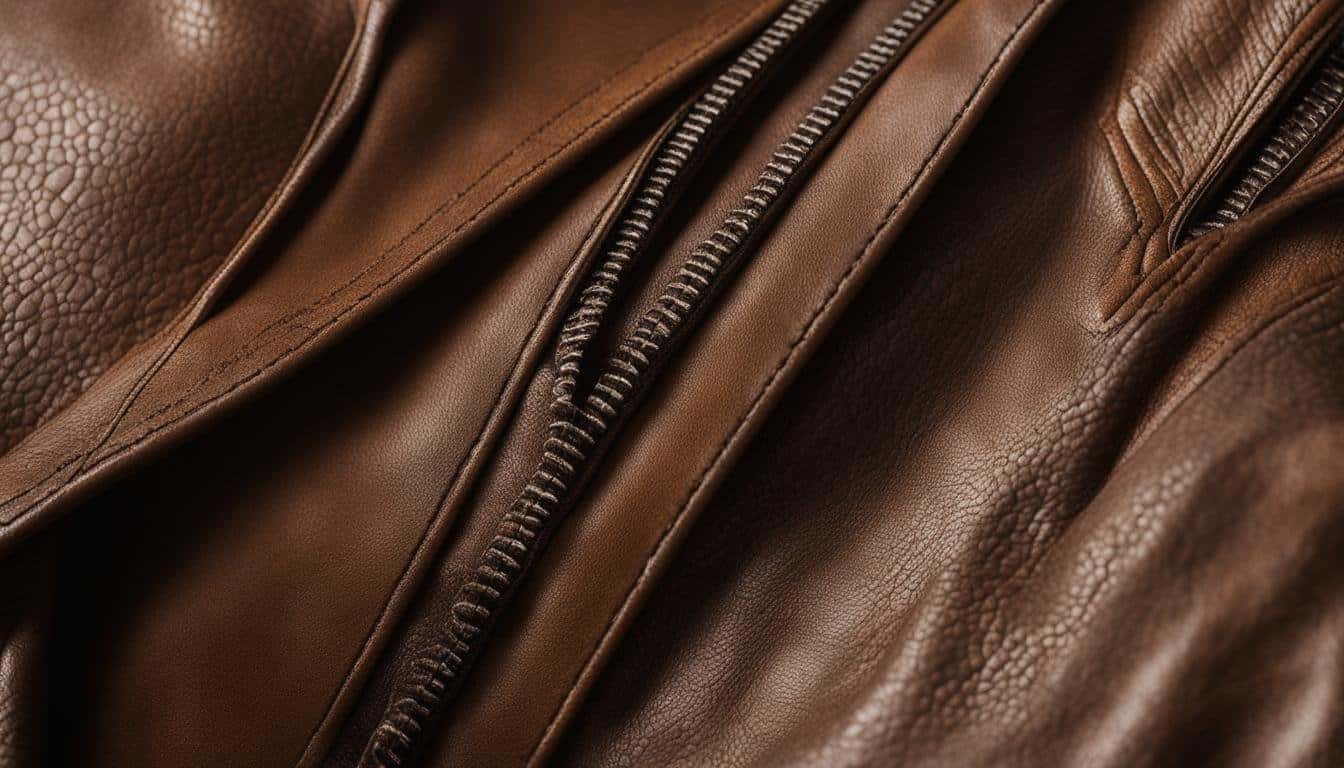In recent years, the demand for sustainable fashion has grown substantially, driving the development of innovative leather alternatives that are not only eco-friendly but also cruelty-free. With an array of low-impact vegan leather alternatives being brought to market, such as mushroom leather and cork vegan leather, fashion enthusiasts and brands can rejoice in having more environmentally responsible materials at their disposal.
As a conscious shopper, I understand the importance of aligning my purchasing decisions with my concern for the environment and animal welfare. That’s why I’m excited to explore the world of plant-based leather materials and witness how they’re reshaping the fashion industry with their innovative properties and versatile applications.
Key Takeaways
- Low-impact vegan leather alternatives are gaining popularity due to increasing demand for sustainable and cruelty-free fashion.
- Some notable vegan leather alternatives include mushroom leather, cork vegan leather, and Piñatex.
- These materials not only reduce negative environmental impacts but also promote ethical fashion practices.
- Embracing plant-based leather materials allows both consumers and brands to make more conscious and responsible choices.
- Investment in research and development of green materials will likely drive further innovation and widespread adoption in the fashion industry.
The Rise of Environmentally Friendly Vegan Leather
The traditional practices of the leather industry have long raised concerns, ranging from animal cruelty to environmental degradation. This has spurred the growth of environmentally friendly vegan leather alternatives – materials that mimic the durability and aesthetic of traditional leather without the associated ethical and environmental costs. Shoppers are increasingly turning towards these alternatives, which are being innovated worldwide, to align their purchases with their values regarding animal welfare and ecological stewardship.
Vegan Food & Living mentions several plant-based leather alternatives, including those derived from pineapple, mushroom, apples, coconut, and cork. These options offer both ethical and environmental benefits.
As consumers become more conscious of the impact their fashion choices have on both the environment and animal welfare, an increasing number of ethical and sustainable materials are being developed to meet demand.
These eco-friendly leather alternatives not only offer a new range of possibilities in style and design, but they also promote the ethical fashion movement by prioritizing animal welfare and minimizing the leather industry’s impact on the environment. Some of the most innovative alternatives include:
- Mushroom leather
- Apple leather
- Piñatex (Pineapple leather)
- Cactus leather
- Cork leather
By choosing these sustainable materials, consumers can directly contribute to a more eco-conscious and ethical fashion industry.
| Leather Alternative | Primary Source Material | Key Environmental Benefits |
|---|---|---|
| Mushroom leather | Mycelium (fungi) | Biodegradable, renewable, and made with less water/energy input |
| Apple leather | Apple waste (cores and peels) | Upcycling waste, reducing landfills, and using fewer toxic chemicals |
| Piñatex (Pineapple leather) | Pineapple leaf fibers | Utilizing agro-waste, fewer chemicals used, and supporting small-scale farmers |
| Cactus leather | Nopal (prickly pear) cactus | Low water consumption, rapid regrowth, and no toxic chemicals |
| Cork leather | Cork oak bark | Renewable, recyclable, and supports cork oak forest ecosystems |
With the adoption of these innovative materials, the future of fashion is looking brighter as consumers and brands alike embrace more sustainable and ethical choices.
Vegan Leather’s Impact on the Environment and Industry
Vegan leather’s rise in popularity is due in part to its environmental benefits over traditional leather. This section explores how sustainable vegan materials play a role in reducing industrial waste and promoting eco-conscious material choices.
Examining the Environmental Benefits Over Traditional Leather
When comparing the environmental impact of traditional leather to vegan leather, the difference is astounding. Vegan leather offers a number of benefits, including lower carbon footprint, no need for livestock farming, and in most cases, biodegradability. Materials like Piñatex and Mylo provide an example of vegan leather innovations that can greatly lessen greenhouse gas emissions compared to chrome-tanned leather, as shown through lifecycle analysis. By opting for vegan leather, consumers contribute to a cleaner environment and healthier ecosystems.
The Role of Vegan Leather in Reducing Industrial Waste
Vegan leather is essential in minimizing industrial waste by incorporating agricultural by-products and using waste materials as the foundation for new goods. For instance, the production process of Piñatex involves utilizing discarded pineapple leaves, turning what could be agricultural waste into a valuable and fashionable material. This not only contributes to more eco-friendly industry practices but also plays a vital part in overall waste reduction.
“By diverting waste streams into production cycles, vegan leather alternatives like Piñatex contribute to more sustainable industry practices and overall waste reduction.”
Choosing sustainable production processes and waste-reducing materials is crucial for encouraging a greener future. The rise of vegan leather creates a shift in traditional fashion practices and promotes the need for additional eco-friendly industry practices, aligning with the ethical values of conscious consumers.
Mushroom Leather: A Groundbreaking Material for Sustainable Fashion
When it comes to sustainable fashion materials, mushroom leather has been making waves for its innovative and eco-friendly attributes. Developed by a company called Bolt Threads, Mylo is a type of mycelium leather obtained from the root system of fungi. As a sustainable alternative to traditional animal leather, Mylo has the potential to revolutionize the fashion industry with its biodegradable and environmentally considerate features.

The production of Bolt Threads mycelium leather is particularly noteworthy for its unique process. The mushroom material is grown in a vertically farmed, renewable energy-powered facility, which significantly reduces the environmental impact compared to conventional leather production. This method not only conserves water and energy but also contributes to the reduction of greenhouse gas emissions.
Mushroom leather promises to transform the fashion industry, showcasing how advanced biotechnology can lead to more environmentally considerate alternatives.
One of the most appealing qualities of Mylo is its durability and resemblance to traditional leather. It maintains a similar texture, strength, and flexibility, making it an ideal choice for creating various fashion items, such as shoes, bags, and accessories. Moreover, its production process can be controlled more easily, ensuring consistency in the final material unlike animal-based leather, which can show natural imperfections.
- Environmentally friendly: Mushroom leather is biodegradable and requires fewer resources to produce.
- Consistency: Mylo’s production process allows for better control over the final material quality and appearance.
- Animal cruelty-free: No animals are harmed in the making of mushroom leather.
- Renewable energy production: The process utilizes renewable energy sources, reducing greenhouse gas emissions.
As society moves toward sustainable fashion materials, mushroom leather is undoubtedly at the forefront of the shift. Thanks to technological innovations brought about by companies like Bolt Threads, the future of eco-friendly fashion looks promising—one where environmental ethics and aesthetics coexist in harmony.
Understanding Piñatex: An Eco-Conscious Leather Made from Pineapple Leaves
In recent years, Piñatex has emerged as a groundbreaking, eco-friendly alternative to traditional leather. This innovative material, also known as pineapple leather, is made from pineapple leaf fibers – a natural by-product of pineapple farming. The production of Piñatex not only offers a sustainable textile solution but also provides an additional income source for pineapple farmers, who can now capitalize on previously discarded waste.

The Process: From Pineapple Farm to Fashionable Material
The journey of turning pineapple leaves into a versatile, fashionable material involves several key steps. Let’s explore the fascinating process behind the scenes:
- Fiber Extraction: The production of Piñatex begins with decorticating the leaves of harvested pineapples. This process extracts long, fine fibers from the leaves, which are then washed and dried.
- Process into Non-Woven Mesh: Once dry, the fibers are processed into a non-woven mesh using a technique that interlocks the fibers through a mechanical, chemical, or thermal process.
- Final Coating: The last step involves coating the non-woven mesh with a European Chemicals Agency (ECHA)-compliant polyurethane (PU) to ensure that the material is durable, flexible, and aesthetically pleasing.
The end result is a high-quality, sustainable leather alternative that rivals traditional leather in terms of appearance, texture, and performance. Piñatex boasts remarkable versatility and can be used for a wide range of applications, from clothing and accessories to furniture and automotive upholstery. Given its eco-conscious production process and utilization of pineapple farming by-products, Piñatex truly embodies the spirit of sustainable textile innovation.
“Piñatex not only offers a sustainable textile solution but also provides an additional income source for pineapple farmers.”
Piñatex has made significant strides in eco-conscious leather production, in line with the ongoing shift towards sustainable fashion and materials. As consumers and producers alike seek to adopt environmentally responsible practices, innovative materials like Piñatex will continue to play a pivotal role in shaping the future of the fashion industry.
Cork: Harvesting Fashion from Nature Without Harm
Cork leather is a unique vegan leather alternative derived from the eco-friendly and renewable resource of cork oak bark, offering a sustainable fashion material that contributes to cork oak conservation. The harvest process of cork is distinguished by its non-invasive and eco-friendly nature, ensuring it doesn’t damage the trees. This allows them to continue thriving, growing, and absorbing carbon dioxide, making cork production a prime example of sustainable and environmentally responsible harvesting practices.
Did you know? A cork oak tree can live up to 200 years, and its bark can be harvested every 9-12 years without causing damage or reducing its lifespan.
Following the sustainable harvesting process, the cork is shaved and processed with a backing material to form cork fabric, which possesses an array of impressive qualities such as waterproofness, renewability, and recyclability. Additionally, the production and use of cork fabric not only supports the fashion industry’s transition towards greener materials but also aids in the preservation of cork oak forest ecosystems.

- Sustainable fashion materials like cork leather offer an ethical alternative to traditional leather and other synthetic materials.
- Cork leather is sourced through eco-friendly harvesting, which helps preserve cork oak trees and their ecosystems.
- Cork fabric is waterproof, renewable, and recyclable, boasting an array of desirable qualities for fashion designers and consumers alike.
Table: Comparison of Cork Leather and Traditional Leather Characteristics
| Characteristic | Cork Leather | Traditional Leather |
|---|---|---|
| Sustainability | High – Renewable resource, eco-friendly harvesting | Low – Deforestation, animal farming, and pollution |
| Durability | High – Resilient and wear-resistant | High – Known for its long lifespan |
| Waterproofness | Yes – Naturally water-resistant | No – Requires treatment |
| Renewability | Yes – Cork oak trees regenerate their bark | No – Finite resource |
| Recyclability | Yes – Can be easily repurposed | No – Typically discarded in landfills |
By choosing cork leather for our fashion choices, we contribute to an innovative and sustainable alternative that lessens the negative impact of the fashion industry on the environment. With countless benefits such as renewable cork material, eco-friendly harvesting, and supporting cork oak conservation, cork leather is undoubtedly a pioneering solution to the quest for sustainable fashion materials.
The Versatility and Durability of Cactus Leather in the Fashion Industry
As an innovative material in the realm of sustainable fashion, cactus leather has been brought to the market by brands like Desserto. It is made from the nopal or prickly pear cactus, a readily abundant and resilient plant. The production of cactus leather demands minimal water and does not rely on toxic chemicals, showcasing its environmental advantages. Notably durable and versatile, cactus leather has been adopted for a variety of fashion products and suggests a greener future for luxury goods.

The process of making cactus leather begins with careful selection and cultivation of the nopal cactus, ensuring minimal disruption to the plant’s natural environment. After a controlled maturation of the plant, the leaves are harvested and processed to obtain the fibers used for the creation of cactus leather.
“Cactus leather has quickly made its mark as one of the most versatile vegan materials, offering durability and sustainability in the world of fashion.”
The following table presents an overview of the properties and sustainability factors of cactus leather as compared to traditional leather:
| Cactus Leather | Traditional Leather | |
|---|---|---|
| Source | Prickly pear cactus (nopal) | Animal hides |
| Water Consumption | Minimal | High |
| Chemicals Used | Biodegradable, Non-Toxic | Often toxic and harmful |
| Durability | High | High |
| Versatility | Extensive | Extensive |
| Environmental Impact | Low | High |
Cactus leather is gaining traction in various fashion categories, thanks to its exceptional attributes of durability and versatility. From shoes and bags to jackets and accessories, cactus leather is paving the way for eco-conscious fashion choices and a greener future for the industry.
As consumers become increasingly aware of environmental issues and seek ethically produced alternatives, cactus leather and similar sustainable materials will continue to grow in popularity and reshape the landscape of fashion. By embracing versatile vegan materials like cactus leather, we can collectively support sustainable leather production and promote a more responsible fashion industry.
Reimagining Apple Waste: The Development of Apple Leather
The fashion industry is continually exploring innovative methods to create sustainable materials. One such material is apple leather, a revolutionary plant-based alternative crafted from the waste generated in the apple industry. Cores and peels are transformed into a durable, eco-friendly product that mimics traditional leather, offering style without the environmental and ethical costs.

How Apple Leather is Redefining Eco-Friendly Materials
This stylish leather alternative, known as AppleSkin, is created by combining apple waste with polyurethane (PU) or other natural materials. The sustainable production process minimizes waste and upcycles materials destined for disposal, reflecting the circular fashion model.
Apple leather showcases the perfect balance of sustainability and style, repurposing apple waste to create an eco-conscious leather substitute.
Ecothes lists diverse vegan leather alternatives such as Polyurethane (PU), recycled plastics and rubbers, cork leather, pineapple leather (Piñatex), and mushroom leather, emphasizing their cruelty-free production processes.
There has been a notable increase in demand for sustainable vegan leather, driven by consumer awareness of the environmental and ethical repercussions of traditional materials. Apple leather is a prime example of eco-friendly apple waste utilization, providing a conscious choice for shoppers seeking a responsible and fashionable alternative.
- Waste Reduction: By using apple industry waste, the production of apple leather reduces the overall waste generated, promoting a more sustainable approach to material sourcing.
- Environmentally Friendly: The process of producing apple leather has a significantly smaller environmental footprint compared to traditional leather, thanks to the utilization of by-products that would otherwise be discarded.
- Stylish and Durable: AppleSkin gives consumers a high-quality, durable material that mimics the appearance and feel of traditional leather, ensuring eco-friendly materials don’t compromise on aesthetics and functionality.
The rise of upcycled leather materials such as apple leather genuinely demonstrates the potential for sustainability in the fashion industry. With a growing number of ethical and eco-friendly options for consumers to choose from, we can expect to see a continued shift towards sustainability as the global trend for conscious consumerism continues to gather momentum.
The Future of Leather Alternatives: Where Tech Meets Ethical Fashion
In recent years, the future of vegan leather has dramatically shifted, thanks to significant advancements in technological innovation in fashion and material science development. These ongoing improvements are unlocking new possibilities for highly sustainable leather alternatives that align with ethical fashion principles while exhibiting promising potential in their environmental impact and design possibilities.
As these new materials emerge from the cutting-edge research of biodegradable vegan materials and sustainable production methods, they are showcasing their superiority over traditional leather in various aspects, including sustainability, biodegradability, and ecological responsibility. The continuous expansion of the sector, backed by increasing investment in research and collaboration across industries, signals a bright future for vegan leather alternatives, offering consumers and brands alike more ethical and eco-friendly options.
With the ongoing development of innovative vegan leather materials, the future of ethical and sustainable fashion is on the rise.
Let’s take a closer look at some of the factors contributing to the progress of this exciting segment:
- Increasing consumer demand for eco-friendly fashion alternatives.
- Greater awareness of the environmental impact and ethical concerns in the traditional leather industry.
- Collaboration between various industries, including fashion, technology, and material science, driving innovation.
- Investment in research and development of sustainable material alternatives.
As we move forward, attention will undoubtedly turn towards new frontiers in sustainable materials that can effectively replicate the properties of traditional leather while mitigating the environmental and ethical concerns associated with its production. Such materials will likely derive from a range of sources like agricultural waste, natural fibers, and lab-engineered materials that can further reduce the ecological footprint of the fashion industry.
| Material Innovations | Potential Advantages |
|---|---|
| Lab-grown leather | Eliminates animal cruelty, potentially reduces environmental impact |
| Agave-based leather | Utilizes a sustainable and abundant resource, low water consumption |
| Recycled plastic-based leather | Repurposes plastic waste, promotes circular economy and waste reduction |
The marriage of technological innovation and ethical fashion is propelling the global fashion industry toward a more ecologically responsible and conscientious future. By embracing these novel materials and sustainable leather alternatives, the sector has the possibility to transform the way we view and consume fashion while fostering significant change for our planet’s well-being.
Conclusion on Low-Impact Vegan Leather Alternatives
The sustainable fashion movement has revolutionized the industry, sparking innovation in green materials and encouraging shifts in consumer behavior. By embracing conscious consumerism, we are directly contributing to the adoption of more ethical material choices and the reduction of environmentally detrimental practices. As we explore and utilize low-impact vegan leather alternatives, such as mushroom leather, Piñatex, and cork, we take significant steps towards a more sustainable future in fashion.
Our choices hold power, and by prioritizing eco-friendly options, we can make tangible, positive changes in the world. The impact of sustainable materials on the environment is substantial, as they minimize pollution, reduce waste, and support healthier ecosystems. Innovative vegan leather alternatives showcase the potential of marrying fashion with sustainability, demonstrating the boundless possibilities of material science development.
As we look towards the future of eco-friendly fashion, we will continue to see advances in technology and ethical fashion blending to create materials that offer both style and environmental responsibility. By making informed and sustainable fashion choices, we can be active participants in the continuous growth of the sustainable fashion movement, shaping a world where the values of style and ecological stewardship coexist harmoniously.
FAQ on Alternative To Leather
Q: What makes synthetic leather a sustainable vegan leather alternative?
A: Synthetic leather, also known as faux leather, is made from materials that do not involve harming or using animals, making it a great vegan alternative. Furthermore, many synthetic leather products are made from recycled materials, which adds to their sustainability.
Q: How do innovative leather alternatives, such as coconut leather, differ from real leather?
A: Innovative leather alternatives like coconut leather differ significantly from real leather. Real leather comes from the hide of animals, while coconut leather is made from the waste material of coconuts. It’s just as durable as real leather, while being cruelty-free and sustainable.
Q: In terms of durability and texture, how do faux leather vegan shoes compare to those made from traditional leather?
A: Faux leather vegan shoes can be just as durable and comfortable as those made from traditional leather. They can be designed to mimic the texture and feel of real leather, making them an excellent choice for those seeking a high-quality, ethical alternative.
Q: How do fashion brands make sure that the synthetic leather products are sustainable?
A: Many fashion brands ensure the sustainability of their synthetic leather products by sourcing materials that are largely composed of recycled material. They might also acquire certification from bodies such as the Leather Working Group to validate their eco-friendliness.
Q: Are vegetable tanned leather products suitable vegan alternatives?
A: While vegetable tanned leather products are more environmentally friendly than some traditional leather goods, they are not vegan as they are still made from animal hides. Vegan leather alternatives are made without using any animal products at all, using materials like mushrooms, cork, or synthetic materials instead.
Q: What is faux leather made of and how does it compare to genuine leather?
A: Faux leather, also known as PU leather, is typically made from a plastic base that is treated with wax, dye, or polyurethane to color and texture it. This vegan leather alternative can have similar qualities as genuine leather, but without the ethical and environmental concerns of animal leather.
Q: How does the Leather Working Group promote sustainable vegan leather alternatives?
A: The Leather Working Group promotes sustainability in the leather industry, including vegan leather alternatives. They offer certification for leather manufacturers who meet their established environmental standards, which indirectly encourages the use and development of sustainable and vegan leather alternatives.
Q: How are tomato leather and other innovative leather alternatives made?
A: Tomato leather and other innovative alternatives are typically made from the waste or residual products of their namesake. For example, tomato leather is made from the skins and seeds of tomatoes that would otherwise go to waste. This process contributes to a more sustainable and eco-friendly leather production.
Q: Is it true that vegan shoes made from faux leather are as worth as a pair made from real leather?
A: Absolutely. Vegan shoes made from faux leather are not only ethically made, but they can also be produced in high qualities that rival real leather shoes. In terms of style, comfort, and durability, a pair of vegan shoes can definitely be as worth as a pair made from real leather.
Q: What makes a vegan leather product like a bag or jacket different from a conventional leather product?
A: Vegan leather products like bags or jackets are different from conventional leather products in their materials and production processes. Vegan alternatives are made without using any animal products, and their production often incorporates sustainable practices and materials. Many vegan leather products are designed to offer a look and feel that is very similar to real leather, often making them hard to distinguish from genuine leather goods.





Leave a Reply